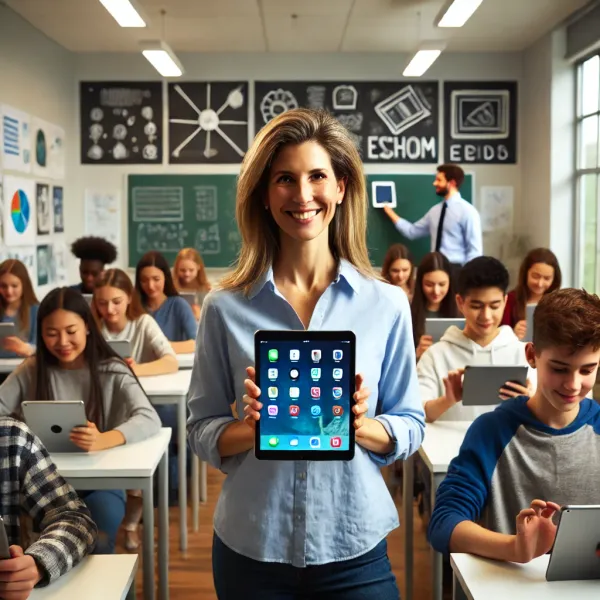EdTech for Deeper Learning: 8 Tools to Transform Your Classroom
In today's digital age, educators are constantly seeking innovative ways to engage students, differentiate instruction, and foster deeper learning.

In today's digital age, educators are constantly seeking innovative ways to engage students, differentiate instruction, and foster deeper learning. Luckily, there's a growing world of EdTech tools designed to address these very challenges. Here are 8 powerful platforms that can transform your classroom:
- Nearpod:
Link: https://nearpod.com/
What it does: Nearpod helps you create interactive lessons packed with engaging features like virtual reality, simulations, and gamified quizzes. You can use pre-made lessons or customize your own.
Why it's valuable: Nearpod combats the "zone-out" factor that can happen with online learning. Its diverse activities cater to different learning styles and keep students actively participating, whether you're teaching synchronously or asynchronously.
- Parlay:
Link: https://parlayideas.com/
What it does: Parlay uses AI to power structured classroom discussions. It helps you generate thought-provoking prompts, track student participation, and provide valuable feedback.
Why it's valuable: Want to move beyond surface-level answers? Parlay guides students toward deeper thinking and analysis. It encourages every student to contribute, making your discussions more inclusive and insightful.
- Seesaw:
Link: https://web.seesaw.me/
What it does: Seesaw is a digital portfolio platform where students can document and share their learning journey. They can use photos, videos, drawings, and more. It also streamlines communication with parents.
Why it's valuable: Seesaw gives students ownership of their learning. They curate their best work, reflect on their progress, and receive feedback from both you and their families.
- Newsela:
Link: https://newsela.com/
What it does: Newsela provides news articles at different reading levels. This means all your students can access the same engaging content, regardless of their reading abilities.
Why it's valuable: Differentiation made easy! Newsela helps you meet the needs of diverse learners while keeping them connected to real-world events. It's a fantastic tool for building literacy skills and encouraging critical thinking.
- Flocabulary:
Link: https://www.flocabulary.com/
What it does: Flocabulary makes learning memorable with hip-hop music and videos that teach academic content across various subjects.
Why it's valuable: Flocabulary injects fun and energy into your lessons. Its catchy songs and videos help students learn and retain information, especially in subjects where they might struggle with traditional teaching methods.
- Canva for Education:
Link: https://www.canva.com/education/
What it does: Canva for Education gives you and your students free access to a design platform with templates and tools for creating presentations, posters, infographics, and more.
Why it's valuable: Say goodbye to boring worksheets! Canva helps you create visually appealing learning materials, even without design skills. It also empowers students to express their creativity.
- Quill:
Link: https://www.quill.org/
What it does: Quill.org provides free online tools that help students strengthen their writing skills through interactive exercises focused on grammar, punctuation, and sentence construction.
Why it's valuable: Quill.org tackles the common problem of students struggling with writing mechanics. It's a great way to supplement your instruction, provide personalized practice, and track student progress.
- Commonlit:
Link: https://www.commonlit.org/
What it does: Commonlit.org offers a vast library of free reading passages and literacy resources for grades 3-12, spanning diverse genres and complexity levels.
Why it's valuable: Keep your students engaged with high-quality reading material! Commonlit.org helps you differentiate instruction, promote reading comprehension, and spark meaningful classroom discussions.
Ready to Level Up Your Teaching?
These 8 EdTech tools are just a starting point. Explore them, experiment, and find the ones that best fit your classroom needs. With the right tools and a little creativity, you can create a dynamic and engaging learning environment where every student thrives.



